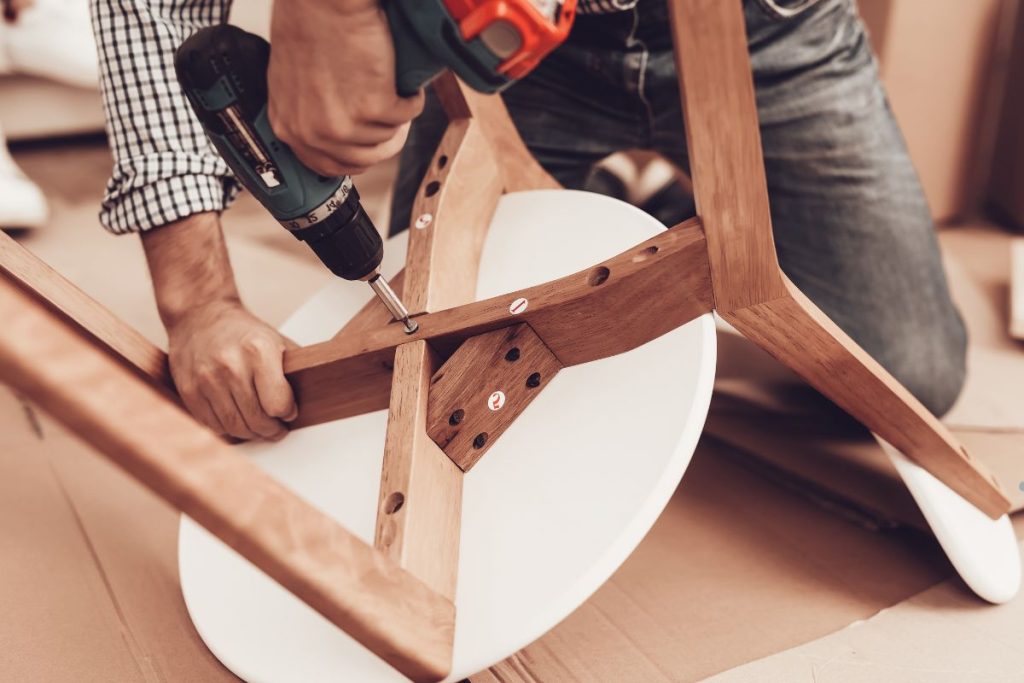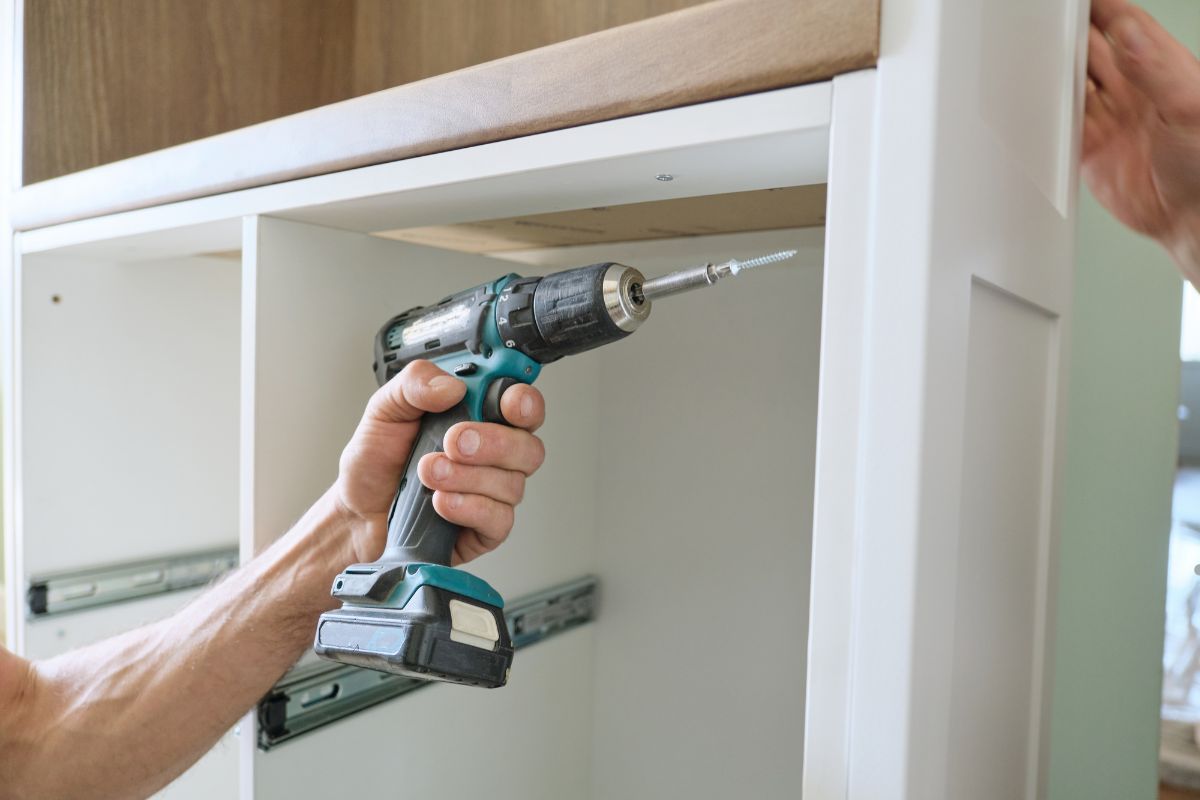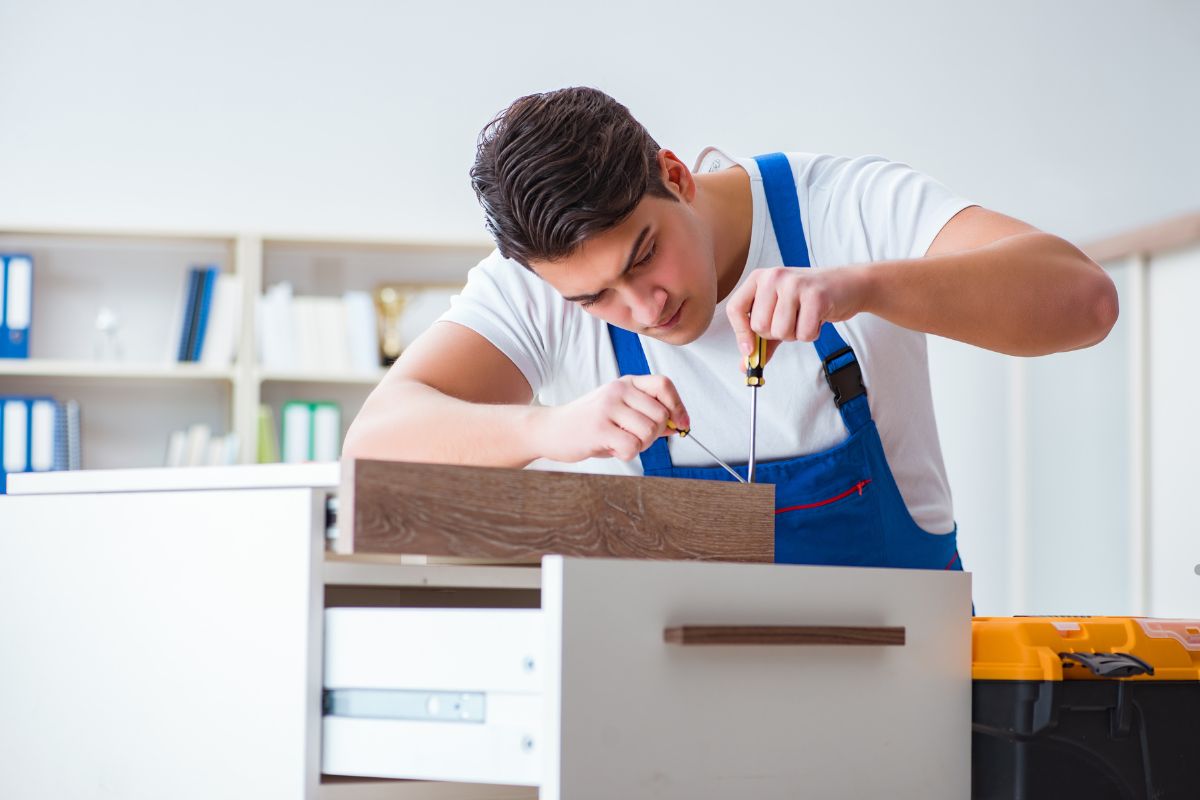
Repairing vinyl furniture typically involves cleaning the damaged area thoroughly, applying a specialized vinyl repair kit (using liquid vinyl or a patch depending on the damage), matching the texture, and allowing it to cure properly. While DIY kits can handle minor tears, scratches, and small holes, significant damage might require professional attention. This guide will walk you through the common steps for fixing your vinyl pieces and help you decide if it’s a job you can tackle yourself.
Understanding Vinyl Furniture and Common Damage
Vinyl upholstery is a top choice for homes and businesses, offering durability, easy maintenance, and a stylish leather-like look at a lower cost. However, over time, issues like cracks, peeling, and discoloration can occur. We provide professional vinyl upholstery repair and restoration, bringing your furniture back to life.
- Tears and Rips: Sharp objects or excessive stress can cause the vinyl to tear.
- Holes and Punctures: Accidental impacts can create small to large holes.
- Scratches and Scuffs: Surface abrasion can leave unsightly marks.
- Burns: Contact with hot items like cigarettes can melt or char the vinyl.
- Fading and Cracking: Prolonged sun exposure or age can cause the material to degrade.
Understanding the type and extent of the damage is the first step in determining the best repair approach. Minor issues are often great candidates for a DIY vinyl repair project.
Gathering Your Supplies and Preparing the Damaged Area

Before you start any repair, preparation is key for a successful outcome. You’ll need the right tools and a clean surface.
Essential Supplies:
- Vinyl Repair Kit: Choose a kit designed for upholstery. These usually contain adhesive, filler/color compounds, backing fabric, texture grain papers, and applicators. High-quality vinyl repair kits are available online and at hardware stores.
- Rubbing Alcohol or Vinyl Cleaner: For cleaning the damaged area thoroughly.
- Clean Cloths: Soft, lint-free cloths for cleaning and application.
- Scissors or Craft Knife: For trimming frayed edges or patches.
- Spatula or Applicator Tool: Often included in the kit.
- Heat Gun or Hair Dryer (Optional): Sometimes used to cure the repair compound (use with caution as per kit instructions).
- Fine-Grit Sandpaper (Optional): For smoothing rough edges on certain types of damage.
Preparation Steps:
- Clean Thoroughly: Use rubbing alcohol or a dedicated vinyl cleaner on a cloth to clean the area around the damage. Remove all dirt, oils, and residues. This ensures the repair compound adheres properly.
- Trim Frayed Edges: Carefully trim away any loose threads or jagged edges around the tear or hole with sharp scissors or a craft knife.
- Dry Completely: Ensure the area is completely dry before proceeding with the repair.
Proper preparation prevents the repair from failing prematurely and helps achieve a less noticeable result. If the preparation seems overwhelming or the damage extensive, don’t hesitate to reach out for professional help.
Step-by-Step Vinyl Repair Techniques
The specific technique you use will depend on the type of damage you’re dealing with. Most comprehensive vinyl repair kits provide materials and instructions for various scenarios. Always refer to your specific kit’s instructions, but here are the general approaches:
Fixing Small Cuts, Tears, and Rips
For minor linear damage, a liquid vinyl repair compound often works best.
- Insert Backing Fabric (if needed): For tears that go all the way through, slip a piece of backing fabric (usually included in the kit) under the tear using the spatula. This provides support.
- Apply Adhesive: Apply a thin layer of the vinyl adhesive under the edges of the tear to secure them to the backing fabric or to each other if no backing is used. Press gently.
- Apply Repair Compound: Mix the color compound according to the kit instructions to match your vinyl color as closely as possible. Apply the compound into the tear using the spatula, slightly overlapping the edges. Build it up in thin layers if necessary.
- Apply Texture Paper: While the compound is still wet, place the appropriate grain/texture paper (from the kit) over the repair.
- Apply Heat (if instructed): Some kits require gentle heat application (hair dryer on low or a specific heat tool) over the grain paper to cure the compound and imprint the texture. Follow kit directions carefully to avoid overheating.
- Cool and Remove: Let the repair cool completely before peeling off the grain paper.
For small linear damage, a liquid vinyl repair compound is often the best solution. If the tear goes all the way through, start by inserting a backing fabric beneath it for added support. Secure the edges with vinyl adhesive, pressing them together carefully. Next, apply the repair compound, mixing the color to match your vinyl as closely as possible. Spread it evenly, building up thin layers if needed.
While the compound is still wet, place the texture paper from the kit over the repair to blend it seamlessly. If required, apply gentle heat using a hairdryer on low or a specialized heat tool to cure the compound and imprint the texture. Once fully cooled, carefully peel off the grain paper to reveal a smooth, durable finish. For professional vinyl repair services, call us today!
Patching Larger Holes
Bigger holes require more support, usually involving a patch.
- Clean and Trim: Prepare the area as described earlier.
- Insert Sub-Patch: Cut a piece of backing fabric slightly larger than the hole. Use tweezers or a spatula to insert it underneath the vinyl, ensuring it lies flat behind the hole.
- Glue Sub-Patch: Apply adhesive around the underside edges of the hole to secure the vinyl to the sub-patch. Let it set slightly.
- Fill the Hole: Apply the mixed color repair compound over the sub-patch, filling the hole completely and ensuring it’s level with the surrounding vinyl.
- Texture and Cure: Use the grain paper and heat (if required by your kit) as described for small tears to match the texture and cure the repair. Multiple thin layers might be needed for deeper holes.
Patching larger areas can be tricky to blend seamlessly. If the damage is significant or in a highly visible spot, professional repair might yield better results.
Addressing Scratches and Scuffs
Surface scratches that haven’t broken through the vinyl layer can sometimes be minimized.
- Clean: Start by thoroughly cleaning the scratched area.
- Conditioner: Try applying a quality vinyl conditioner. Sometimes this can mask minor scuffs by restoring moisture and sheen.
- Heat (Use Extreme Caution): For very light scratches, briefly passing a heat gun on a very low setting several inches above the surface (never touching) can sometimes cause the vinyl to contract slightly, minimizing the scratch. Test in an inconspicuous area first – too much heat will cause irreparable damage.
- Repair Kit Filler: For deeper scratches, you might need to carefully apply a small amount of color-matched filler from your repair kit, texture it, and cure as needed.
Dealing with Burns
Burns often melt or char the vinyl, requiring removal of the damaged material.
- Clean: Clean the area around the burn.
- Trim Damaged Vinyl: Carefully use a sharp craft knife or scissors to cut away the hardened, charred, or melted vinyl. Try to create a clean edge.
- Repair as a Hole: Treat the resulting opening like a small hole or tear, using a sub-patch if necessary, applying filler compound, and texturing as described above. Matching the color and texture is crucial for burn repairs.
Burn repairs can be particularly challenging to make invisible due to the nature of the damage.
Finishing Touches for a Seamless Repair
Achieving a repair that blends well is the final goal.
- Color Matching: Take time to mix the color compounds accurately. Test on an inconspicuous area if possible. Most kits offer mixing guides.
- Texture Application: Using the correct grain paper from your kit is vital. Apply firm, even pressure (or heat, if directed) to imprint the texture properly.
- Leveling: Ensure the repair compound is level with the surrounding vinyl surface before curing.
- Sealant (Optional): Some kits include or recommend a clear sealant to apply over the cured repair for added durability and sheen matching.
Preventing Future Vinyl Damage: Care Tips
An ounce of prevention is worth a pound of cure! Keep your vinyl furniture looking its best for longer with these tips:
- Regular Cleaning: Wipe down vinyl surfaces regularly with a damp cloth. For tougher grime, use a mild soap solution or a dedicated vinyl cleaner. Avoid harsh chemicals or abrasive cleaners.
- Conditioning: Apply a vinyl conditioner periodically (every few months) to keep the material supple and prevent cracking, especially in dry climates.
- Sun Protection: Keep vinyl furniture out of direct, prolonged sunlight, which can cause fading and brittleness. Use window coverings if necessary.
- Avoid Sharp Objects: Be mindful of keys, belt buckles, pet claws, and other sharp items that can scratch or puncture the vinyl.
- Heat Protection: Use coasters and placemats to shield vinyl surfaces from hot dishes and mugs. Additionally, keep furniture away from direct heat sources like radiators or fireplaces to prevent warping or damage. For professional vinyl care and repairs, call us today!
When to Call a Professional Upholstery Repair Service

While DIY kits are great for minor fixes, some situations are best left to the pros:
- Extensive Damage: Large rips, multiple holes, or widespread cracking/peeling.
- Structural Damage: Damage that affects the furniture’s frame or padding beneath the vinyl.
- Valuable or Antique Pieces: If the furniture holds significant monetary or sentimental value, professional restoration is recommended.
- Perfect Match Required: Professionals have access to a wider range of materials, colors, and tools for near-perfect color and texture matching.
- Lack of Time or Confidence: If you’re unsure about your ability to achieve a good result or simply don’t have the time, calling an expert saves hassle and ensures a quality repair.
Professionals like us have the experience and specialized upholstery repair tools to handle complex jobs effectively.
Restore Your Vinyl Furniture with Confidence
Fixing minor damage on your vinyl furniture is often a manageable DIY project that can save you money and extend the life of your favorite pieces. By carefully cleaning the area, choosing the right repair kit, and patiently following the steps for applying and texturing the repair compound, you can achieve satisfying results. Remember to practice good vinyl care to prevent future issues. And when the damage seems too challenging, professional help is always available to restore your furniture beautifully.
Frequently Asked Questions About Vinyl Repair
Can all types of vinyl furniture be repaired?
Most common vinyl upholstery used on sofas, chairs, ottomans, and bar stools can be repaired, especially for issues like tears, small holes, and scratches. However, very thin or heavily textured vinyl might be more challenging. Severely degraded, brittle, or peeling vinyl might be beyond effective spot repair and could require reupholstering.
How long does a vinyl repair take to dry?
Drying or curing time varies significantly depending on the repair kit, the thickness of the application, and ambient temperature/humidity. Simple adhesive might set in minutes, while filler compounds might need several hours or even up to 24 hours to fully cure. Always follow the specific instructions provided with your repair kit.
Are vinyl repair kits permanent?
When applied correctly to a properly prepared surface, repairs made with quality vinyl repair kits can be very durable and last for years. However, the longevity can depend on the location of the repair (high-wear areas may wear faster) and the quality of the kit used. They provide a strong, flexible bond designed to withstand normal use.
Can I match the exact color of my vinyl?
Most kits come with several base colors and a mixing guide. With careful mixing, you can often get very close to the original color, especially for common shades like black, brown, grey, or white. Achieving an absolutely *perfect*, invisible match can be difficult, especially for unique or faded colors. Professionals typically have more advanced color-matching capabilities.
Is repairing vinyl furniture cheaper than replacing it?
Yes! For minor to moderate damage, a DIY vinyl repair kit (typically $15-$30) can be a budget-friendly alternative to buying new furniture or paying for full reupholstery, which can cost hundreds. Even professional spot repairs are often more affordable than replacement. Want expert advice or professional repair? Contact us today for cost-effective vinyl restoration solutions!
